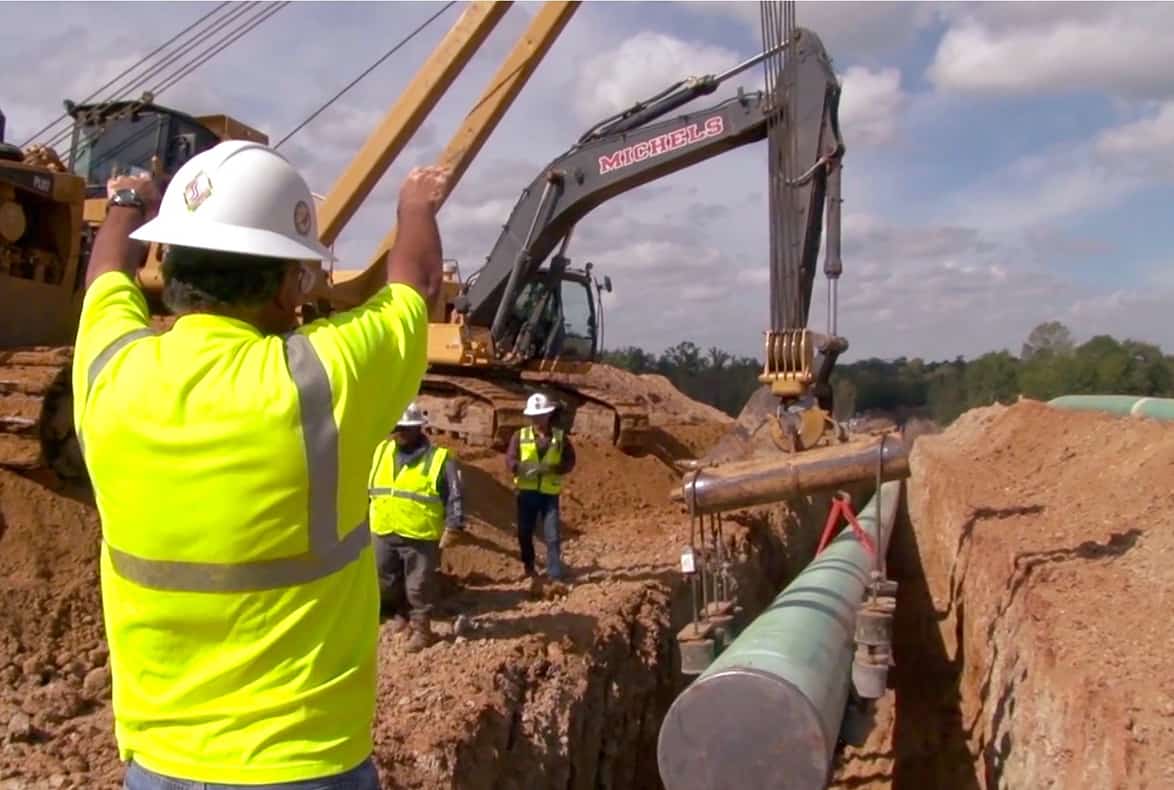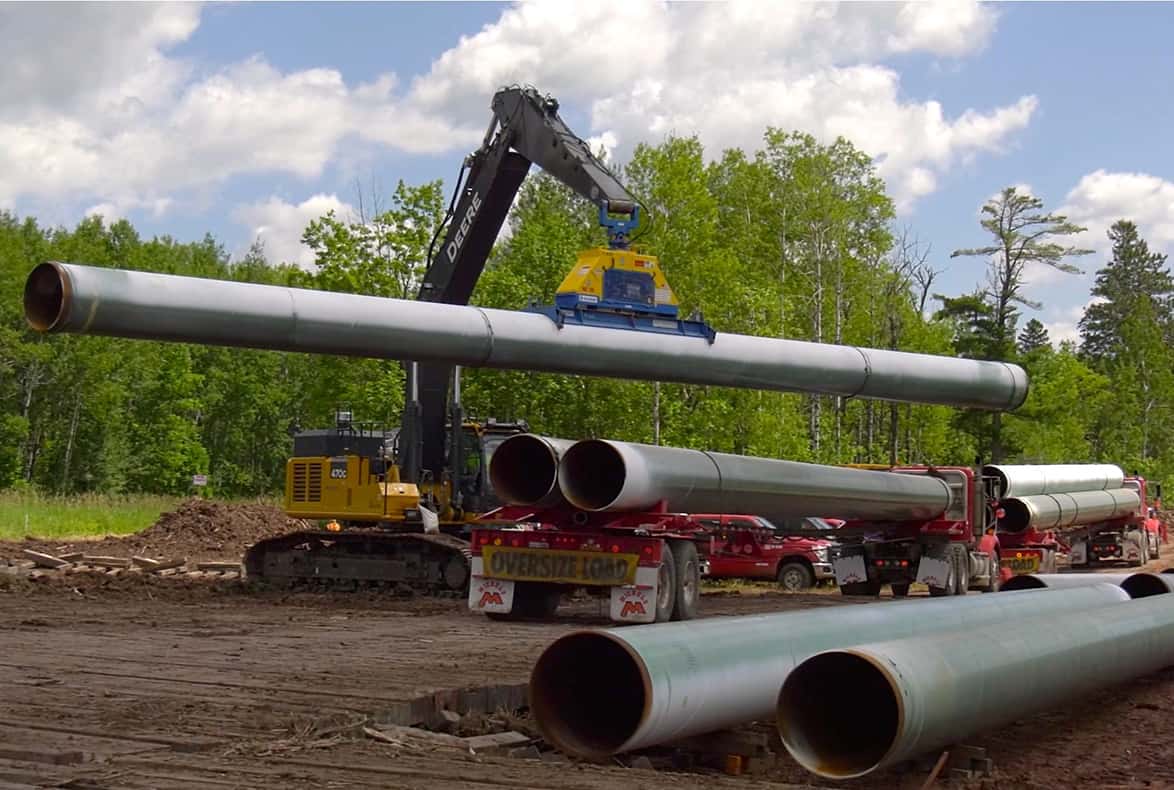Creek Pipe local contractor: Why regulatory alignment matter
Wiki Article
Recognizing the Secret Features of Pipeline Services and Their Effect On Performance
Pipeline solutions play a vital function in different industries, affecting functional efficiency considerably. Key features, such as innovative tracking modern technologies and maintenance methods, are essential for lessening downtime. Additionally, regulatory conformity assurances safety and environmental security. The interplay between design, infrastructure, and financial elements can make complex these procedures. Understanding how these elements influence overall efficiency elevates vital questions concerning best practices and future developments in the field.The Role of Technology in Pipeline Monitoring
As improvements in innovation remain to evolve, the importance of reliable pipe surveillance has come to be progressively obvious. Modern pipe systems count on sophisticated monitoring devices that improve functional efficiency and safety. Technologies such as real-time information analytics, sensors, and drones offer operators with prompt insights right into pipeline conditions, allowing them to identify leakages, corrosion, and various other potential concerns prior to they escalate right into substantial problems.Moreover, the combination of Web of Points (IoT) gadgets has actually transformed conventional surveillance techniques, enabling continuous monitoring and automated reporting. This proactive method not just minimizes threats however additionally enhances maintenance timetables and resource appropriation. Additionally, progressed software program platforms help with data visualization and interpretation, encouraging decision-makers to react swiftly to anomalies. Jointly, these technological innovations not just improve pipeline stability but also foster environmental stewardship by minimizing the potential impact of leaks and spills.
Maintenance Strategies for Enhanced Performance
Reliable maintenance methods are important for enhancing pipeline performance. Executing predictive upkeep methods, sticking to regular assessment procedures, and developing robust emergency response plans can substantially boost functional dependability. These strategies not just decrease downtime yet also add to the general security and stability of pipe systems.Predictive Upkeep Methods
Anticipating upkeep methods are increasingly identified for their capability to enhance functional effectiveness in pipe solutions. By leveraging information analytics and keeping track of modern technologies, these methods enable drivers to anticipate equipment failings before they happen. This aggressive method decreases unplanned downtime, lowers maintenance prices, and prolongs the life expectancy of crucial assets. Sensors and IoT gadgets play a critical duty in accumulating real-time data, permitting for the evaluation of tools health and performance patterns. Artificial intelligence formulas evaluate this information to identify patterns and forecast potential problems. Subsequently, pipeline drivers can arrange upkeep activities throughout non-peak times, optimizing resource allotment and guaranteeing continual operation. Eventually, the fostering of anticipating upkeep cultivates an extra dependable and reliable pipe framework.
Regular Examination Protocols
Routine evaluation methods offer as a foundation of upkeep approaches targeted at enhancing efficiency in pipeline operations - Creek Pipe Midland TX. These protocols entail organized analyses of pipe integrity, focusing on discovering prospective issues prior to they intensify. Routine assessments usually include aesthetic analyses, leak discovery modern technologies, and stress surveillance to guarantee peak efficiency. By sticking to established routines, drivers can determine rust, material wear, or blockage, thereby reducing downtime and repair expenses. Furthermore, information gathered throughout evaluations can inform anticipating upkeep efforts, permitting a proactive strategy to pipeline administration. Ultimately, regular examinations not only extend the life-span of pipe infrastructure however additionally add to more secure and a lot more reliable transportation of sources, strengthening general functional effectivenessEmergency Feedback Preparation
Emergency feedback planning is essential for maintaining efficiency in pipeline operations, making sure that drivers are prepared to attend to unforeseen events swiftly and properly. A well-structured emergency feedback strategy consists of clear procedures, assigned duties, and communication approaches to mitigate risks connected with pipe failures. Regular drills and training boost team preparedness and familiarize workers with emergency procedures. Furthermore, having readily offered resources, such as spill containment equipment and emergency call lists, can substantially minimize feedback times. By incorporating real-time tracking technologies, operators can rapidly determine and react to problems, decreasing ecological influence and operational downtime. Inevitably, a comprehensive emergency situation action strategy not just safeguards assets and personnel however likewise strengthens the general efficiency of pipe services.Regulative Conformity and Security Standards
Regulatory conformity and safety and security standards play an essential role in the pipeline solutions market. Midland pipeline construction company. Sticking to market guidelines assures that firms implement reliable safety protocols and risk monitoring strategies. This commitment not only shields employees and the atmosphere however also improves general operational effectivenessCompliance With Sector Regulations
Compliance with market guidelines is essential for making sure the security and efficiency of pipeline operations. Regulative structures, such as those established by the Epa (EPA) and the Pipeline and Hazardous Products Safety Management (PHMSA), established strict standards that drivers should stick to. These laws cover different aspects, including pipeline style, construction, upkeep, and surveillance, ensuring that systems operate safely and efficiently. Non-compliance can bring about extreme charges, functional delays, and ecological risks. By adhering to these guidelines, pipe companies not only secure public safety and security and the atmosphere but also boost their operational efficiency. Eventually, governing conformity promotes trust fund among stakeholders, ensuring that pipeline solutions can operate seamlessly in a competitive landscape while fulfilling legal commitments.
Security Procedure Implementation
Reliable safety procedure implementation is a vital component of pipeline procedures, carefully connected to regulatory compliance and safety criteria. Following these methods not only guarantees the defense of personnel but likewise safeguards the environment and facilities. A durable safety framework includes routine training, detailed assessments, and making use of suitable security tools. Organizations must remain cautious in updating their procedures to reflect changes in policies and technological advancements. Compliance with well established safety Click Here and security criteria minimizes the danger of mishaps read this post here and enhances functional efficiency. Additionally, a society of security cultivates worker engagement and responsibility, contributing to total organizational success. Inevitably, effective safety protocol execution is extremely important in preserving the stability of pipeline solutions and achieving lasting sustainability in procedures.Danger Management Approaches
Applying robust threat management strategies is important for guaranteeing that pipe operations abide by governing demands and safety criteria. Organizations needs to recognize potential dangers and assess risks related to pipeline tasks. This includes conducting complete assessments, utilizing sophisticated monitoring modern technologies, and preserving conformity with industry laws. Regular training for employees on safety protocols boosts situational awareness and prepares groups to react effectively to emergency situations. Additionally, establishing backup plans and performing drills can significantly mitigate threats. Working together with regulative bodies makes certain placement with advancing security requirements. By focusing on risk management, pipeline services can improve functional efficiency while securing both the setting and public safety. Ultimately, a proactive method to risk management fosters a society of safety and security within the sector.Pipeline Layout and Facilities Considerations
How can the design and facilities of pipelines affect overall operational efficiency? The configuration of pipelines plays a crucial function in identifying their efficiency. Effective design lessens rubbing losses, therefore lowering energy usage throughout fluid transportation. Aspects such as size, product choice, and design directly impact flow prices and maintenance requirements.Furthermore, calculated placement of valves and checking systems boosts operational control and safety. Creek Pipe Midland TX. Facilities considerations, including accessibility for maintenance and repair, significantly affect downtime and total productivity
Additionally, integrating innovative technology for real-time tracking facilitates punctual detection of leakages or inadequacies, ensuring quick reactions to issues. The total structural honesty, affected check this site out by product toughness and ecological aspects, also shapes long-term operational success. Subsequently, thoughtful style and durable facilities are necessary for maximizing pipeline performance, ultimately adding to the reliability and productivity of pipeline services.
Ecological Effect and Sustainability Practices
While the demand for pipeline services continues to expand, recognizing the environmental impact and taking on sustainability practices has actually ended up being significantly crucial. The building and construction and operation of pipes can notably influence ecological communities, wild animals habitats, and water sources. To mitigate these effects, companies are implementing advanced innovations and methods intended at minimizing discharges, protecting against spills, and reducing land disturbance.
Sustainability efforts often include making use of eco-friendly materials, boosting power performance, and employing renewable resource resources to power operations. Additionally, business are increasingly carrying out thorough environmental assessments before job initiation, ensuring conformity with regulations and stakeholder involvement.

Cost Management and Economic Consider Pipeline Providers
As the pipeline market grows, reliable price administration and recognizing financial variables end up being vital for preserving competitiveness. Firms face various financial pressures, consisting of rising and fall material expenses, labor costs, and regulative conformity costs. To browse these challenges, pipe service providers need to take on critical economic planning and budgeting methods.Purchasing innovation can enhance functional efficiency, eventually decreasing expenses gradually. Furthermore, effective task management assurances that resources are allocated successfully, reducing delays and unanticipated costs.

Market conditions, such as need for energy and geopolitical elements, also affect financial practicality. Firms have to continue to be active, changing their approaches in reaction to these outside factors.
Frequently Asked Inquiries
What Are the Various Kinds Of Pipeline Solutions Available?
Various sorts of pipeline solutions include transportation, storage space, upkeep, inspection, and fixing. Each service plays a crucial duty in ensuring the smooth movement of materials, improving safety, and decreasing functional disturbances throughout various markets.How Frequently Should Pipeline Inspections Be Conducted?
Pipeline evaluations must be performed consistently, typically every one to three years, relying on the type and condition of the pipeline. Extra frequent examinations may be necessary for older or high-risk pipes to assure security and stability.
What Are the Key Causes of Pipeline Failures?
The primary causes of pipeline failings consist of corrosion, malfunctioning building, material defects, outside damage, leakages, and functional mistakes. Each variable contributes substantially to potential dangers, highlighting the relevance of normal maintenance and tracking for safety and security.Exactly How Can Firms Improve Pipeline Solution Reliability?
Companies can improve pipeline solution dependability by implementing regular upkeep schedules, utilizing sophisticated monitoring technologies, performing comprehensive inspections, investing in employee training, and taking on proactive risk management techniques to prepare for and mitigate potential failings.What Function Do Operators Play in Pipeline Providers?
Operators play an important role in pipeline solutions by making certain safe transport, preserving tools, keeping an eye on system integrity, coordinating upkeep, and reacting to emergencies. Their know-how directly affects functional efficiency and lessens disruptions in service delivery.Report this wiki page